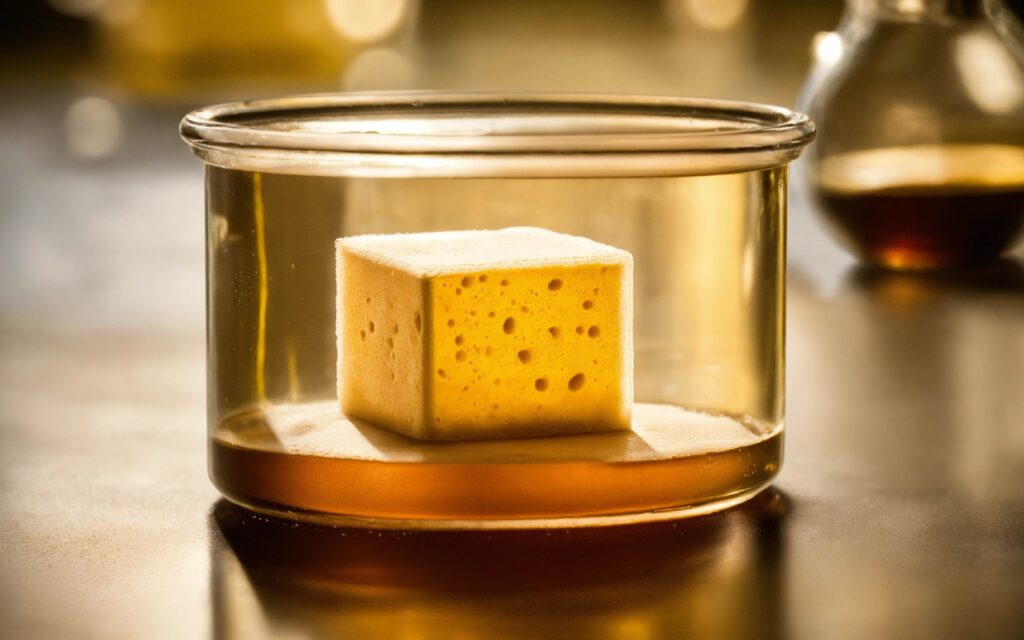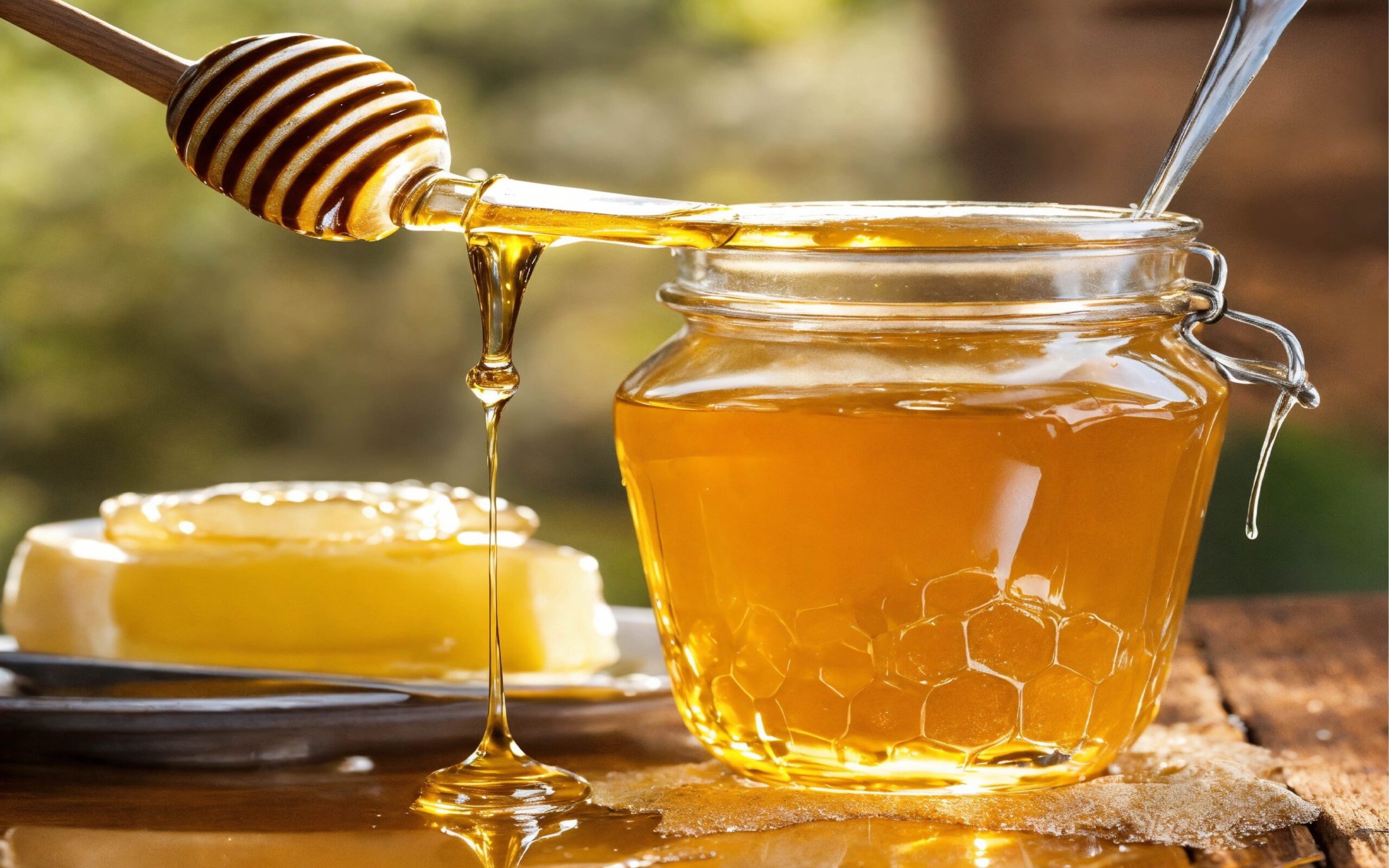What Exactly is Mielado?
Have you ever come upon a gourmet hidden treasure? Let me thus present you to Mielado. It’s an entire experience, not only another sweetener you drop into your tea or spread over pancakes. Mielado for you is honey and syrup having a baby! Still, this delectable delicacy is far more than what first greets the eye. What then precisely is Mielado, and why ought you to be interested? Allow us to explore the secrets of this interesting and adaptable sweetener.
The Origins of Mielado
Mielado’s narrative has as depth as its taste. From the first societies that came upon its distinctive taste and texture, this sweetener has long history. From the Spanish word “miel,” meaning honey, the name “Mielado” hints about its source. The first Mielado is thought to have been a happy accident resulting from honey left to crystallize under specific conditions. This accidental finding resulted in the deliberate manufacture of Mielado, which is now a mainstay in many kitchens all over.
Traditional Uses in Ancient Cultures
Mielado was a symbol of wealth and health in ancient civilizations, not alone a delicacy. For the Mayans, it was more than food; it was a gift from the gods applied in religious ceremonies and conventional treatment. Mielado had therapeutic qualities, they thought, and they were really right. Thanks to its inherent antibacterial and calming qualities, this sweetener was commonly used to treat a variety of conditions, including stomach problems and sore throats. Imagine life in when something as basic as Mielado was seen as amazing!
The Evolution of Mielado Production
The manufacturing of Mielado changed throughout time. Early techniques were basic; honey was let to crystallize organically over time. As demand increased, though, manufacturers started to hone their methods. Mielado is manufactured today under supervised conditions guaranteed of consistency and quality. Mielado has evolved to be a worldwide phenomenon rather than only a localized delicacy. Though modern techniques still respect historic roots, every batch of Mielado is a perfect fusion of history and creativity thanks to their perfection.
Breaking Down Mielado’s Ingredients
Why is Mielado so distinctive? Its components provide the solution. Mielado is fundamentally composed of pure honey, which is subsequently refined to provide a thick, syrupy consistency with rich and velvety texture. That’s not all, though; depending on the area, Mielado may also be mixed with additional ingredients, such citrus zest or spices, which give it a different flavor profile. These additives improve the taste and help to create the whole Mielado enjoyment experience. It’s like honey on a taste-buzz adventure!
Natural Sweeteners in Mielado

Mielado stands out in part for its use of natural sweeteners. Honey used in Mielado keeps its original sweetness unlike processed sugars, which are devoid of nutrients. This means that when you indulge in Mielado, you’re not only fulfilling your sweet taste but also ingesting a sweetener high in antioxidants, enzymes, and other good ingredients. These natural sweeteners make Mielado a better substitute for more traditional choices since they provide the desired sweetness free from guilt. Though superior, it’s nature’s sweets.
Nutritional Value of Mielado
Speaking about health, let’s discuss Mielado’s dietary worth. This sweetener is loaded with nutrients that will help your health in several different ways, not just empty calories. Mielado firstly provides good levels of minerals and vitamins, including iron, calcium, and vitamin C. Additionally included are antioxidants, which shield your body from inflammation and oxidative damage. Not to be overlooked are Mielado’s natural sugars, which offer a rapid and consistent energy boost. Mielado gives a nutritional punch hard to match whether you use it as a topping for your porridge or in your morning smoothie.
The Surprising Health Benefits of Mielado
The short answer is yes! You might wonder, “Okay, Mielado sounds delicious, but is it perfect for you?” Mielado is a superfood unto itself, not only a sweet delight. From strengthening your immune system to enhancing your digestive tract, Mielado provides a spectrum of health advantages that can help you feel better generally. Let’s examine some of these unexpected advantages closer-up.
Boosting Immunity with Mielado
The capacity of Mielado to strengthen your immune system is among its most amazing advantages. Mielado’s great antioxidant concentration helps your body fight free radicals—those nasty molecules that could damage cells and lead to chronic ailments. Mielado boosts your immune system and aids in your general health by neutralizing these free radicals. Particularly in cold and flu season, its natural antibacterial qualities help fight off illnesses, so it is a perfect addition to your diet. See Mielado as your sweet protection from disease.
Mielado for Digestive Health
Are you experiencing stomach problems? Mielado might be your cure-all. Its natural enzymes improve digestion, therefore enabling more effective breakdown of food and avoiding common digestive problems including bloating and gas. Mielado is a mild but powerful remedy for digestive problems since its anti-inflammatory qualities can also calm an upset stomach. Whether your digestive problems are persistent or sporadic, including Mielado into your diet might help greatly. It like a consoling embrace for your stomach!
Skin and Beauty Benefits

Unbelievably, Mielado can also help your skin look great. Natural skincare regimens would benefit much from its antibacterial and hydrating qualities. Mielado may help maintain your skin healthy and glowing whether your usage it as a natural exfoliator, a spot treatment for acne, or even a face mask. It’s a great choice for sensitive skin since its relaxing qualities can also aid to calm inflamed skin. Why not grab some Mielado the next time you’re pampering yourself and treat your skin the queen it deserves?
Culinary Uses of Mielado
Mielado is a gastronomic star as much as a health enhancer! Its rich, sophisticated taste qualifies it as a flexible component in many kinds of cuisine. Mielado can help you take your cuisine to the next level whether your preferred recipes call for a little sweetener or you want to create something totally fresh. Let’s discuss some methods you may include Mielado into your cooking projects.
Mielado as a Sugar Substitute
Mielado is a great substitute if you wish to limit refined sugar. It’s ideal for baking, cooking, and even your morning coffee since it’s naturally sweet. Mielado, however, offers a depth of taste that refined sugar cannot equal, not only a 1:1 substitute for sugar. Mielado may improve the taste and provide a distinctive touch to your recipes whether you’re baking cookies, cakes, or savory meals including glazed veggies. It’s like substituting a taste powerhouse for some basic sugar!
Mielado in Traditional Dishes
Mielado is a basic component in many civilizations’ traditional cuisine. For example, it’s used to create piloncillo, a sort of unrefined cane sugar that is a mainstay of many Mexican delicacies. Mielado is sometimes on toast or drizzled over pastries in Spain. And in the Middle East, it’s sweetening agent for everything from tea to baklava. Including Mielado into your cuisine can let you to explore the rich gastronomic traditions of many countries and give your food some authenticity.
A Simple Guide to Making Mielado
All set to try your hand at home cooking Mielado? Easier than you would think! Just a few basic ingredients and patience can let you make your batch of this wonderful sweetener. This is a detailed road map to get you going.
Gathering Ingredients and Tools
You have to first compile your ingredients. A simple Mielado recipe calls for premium honey, some citrus—such as lemon or lime—and any spices you like to use. For a savory spin, some common choices are cinnamon, cloves, or even a little of salt. To get contaminants out of your finished good, you will also need a big saucepan, a stirring spoon, and a fine mesh strainer.
Step-by-Step Preparation Process
Heading first on low heat in the pot, warm your honey. This aids in honey thinning and facilitates easier combining with the other ingredients. Add the lemon juice and any selected spices after the honey is warm. Stirring constantly, keep heating the mixture over low heat until it thickens to your desired consistency. Once it is properly mixed, keep stirring periodically. Depending on how thick you wish your Mielado to be, this could take anywhere between thirty minutes and an hour. To eliminate any contaminants, strain the mixture lastly through the fine mesh strainer; let it cool before putting it in a jar. And you have created your own Mielado exactly as such!
Exploring Different Types of Mielado
Mielado is a universal sweetener, did you know that? Where it’s created and the particular ingredients used will affect the flavors, textures, and colors Mielado can have. Every variety of Mielado has special qualities that make it a flexible ingredient fit for many cooking requirements and personal tastes. Let’s review some of the several Mielados you might come across.
Regional Variations and Their Unique Flavors

Meelado’s taste can vary greatly based on the area of production, much like wine or cheese would do. Meelado, for instance, is produced in Mexico often from piloncillo, which gives it a rich, deep taste with caramel and molasses undertones. Usually deeper in hue and with a thicker viscosity, this kind of Meelado is ideal for sloshing over pancakes or blending into coffee.
Mielado, on the other hand, usually tastes and looks thinner in Spain. It has a delicate, almost ethereal taste and is produced with lighter honey, maybe with floral notes from the surrounding flora. Often used as a sweetener in tea or as a topping for pastries, Spanish mielado’s subdued tastes may really show through.
Then there’s the Middle Eastern variant, in which Mielado is often mixed with cinnamon, cloves, or even saffron. The typical desserts of the area, such baklava or kunafa, fit this kind of Mielado’s warm, spicy undertone.
Every kind of Mielado provides something special to the table, wherever it comes from. Investigating these regional differences can be enjoyable since it will open your gastronomic horizons and introduce fresh tastes.
Sustainable Mielado Production
The significance of sustainable production methods increases along with Mielado’s growing popularity. Like many natural goods, Mielado’s manufacture is intimately linked to the surroundings, especially with regard to honeybee population health. Unfortunately, habitat loss, pesticide use, and climate change all affect honeybees’ capacity to produce honey—and so, Mielado.
Challenges in Mielado Harvesting
Ensuring that honey is gathered in a method that doesn’t damage the bees or their habitat is one of the toughest issues facing Mielado production. Large volumes of honey are sometimes taken from the hive in traditional beekeeping methods, therefore depriving the bees of nourishment to last the winter. Responding to this problem, several Mielado producers are using more environmentally friendly beekeeping techniques. These include employing natural means of pest control, leaving enough honey in the hive for the bees to survive, and growing bee-friendly flowers to offer extra food supplies.
Eco-friendly Practices
Apart from environmentally friendly beekeeping, certain Mielado growers are also reducing their impact on the surroundings by extra actions. They might, for instance, recycle water used in the Mielado processing, run solar-powered equipment in their manufacturing plants, and pack their goods in environmentally friendly materials. These methods guarantee that this wonderful sweetener can be savored for next generations and assist to lower the carbon footprint of Mielado manufacture.
When buying Mielado, search for goods marked as sustainably or organically produced. In addition to helping eco-friendly methods, you will be obtaining a product devoid of dangerous chemicals and additions. The earth benefits as well as you do!
The Sweet Future of Mielado
For Mielado, then, what promises to be ahead? The popularity of this natural sweetener will probably keep increasing as more people learn its advantages. Mielado’s distinctive taste, adaptability, and health advantages help it to be a mainstay in kitchens all over.
Mielado’s future, meanwhile, is about invention as much as demand. We anticipate many more types of Mielado hitting the market as manufacturers play about with novel flavors, ingredients, and production techniques. Imagine an Mielado enhanced with unusual spices or one created from uncommon honey varieties that produce a whole different taste sensation. The opportunities are almost unlimited!
Apart from cooking purposes, Mielado could be really important in natural health and wellness products. Mielado’s natural enzymes and antioxidant qualities make it a potential major component in skincare products, vitamins, and even home cures. As we keep discovering the health advantages of Mielado, this sweetener might become known as food and a useful tool for encouraging general well-being.
Conclusion
A trip through history, culture, and flavor, mielado is not just a sweet treat. Mielado has shown to be a flexible and useful addition to any kitchen from its traditional beginnings to its contemporary uses. Mielado presents something for everyone whether your goals are to improve your health, discover new gastronomic delights, or indulge in something sweet. Why then not try it? This wonderful sweetness can turn out to be your new favourite ingredient.
FAQs
1. How is Mielado different from regular honey?
Made to reach a thicker, syrupy consistency, mielado is a variety of honey. Mielado is more like a syrup and usually has a richer, more nuanced taste while conventional honey is usually watery or semi-solid. Mielado’s distinct taste may also be enhanced with other flavors as citrus or spices.
2. Can Mielado be used as a sugar substitute in baking?
Mielado can indeed be substituted for sugar in baking. It’s a terrific substitute for refined sugar because of its natural sweetness, which also helps your baked products taste more deeply. Mielado is more concentrated than sugar, nevertheless, therefore you might have to change the quantity you use in your recipes.
3. Is Mielado suitable for vegans?
Mielado is not vegan since honey is an animal byproduct. For those trying to cut back on refined sugar intake, this is a natural and less processed sweetener, though.
4. How should Mielado be stored?
Mielado should be kept dry and cold away from direct sunlight. It can crystallize with time, much as ordinary honey, but this has no bearing on its quality. Should your mielado solidify, gently warm it in a water bath to get it back into liquid form.
5. Where can I buy Mielado?
Mielado can be found in specialty food stores, online retailers, and some supermarkets. Look for products that are labeled as organic or sustainably produced to ensure you’re getting a high-quality product. You can also try making your own Mielado at home using the recipe provided in this article.




